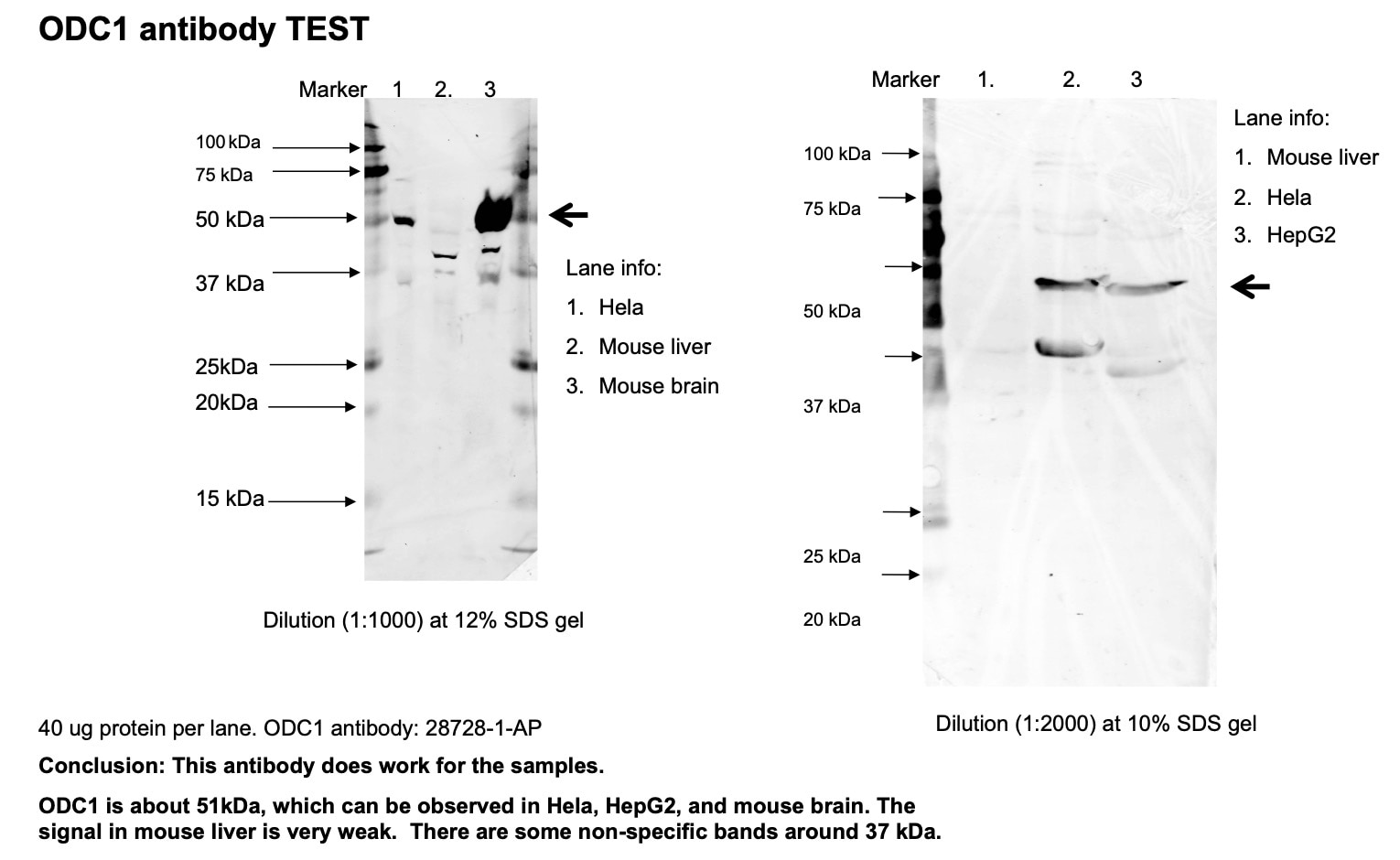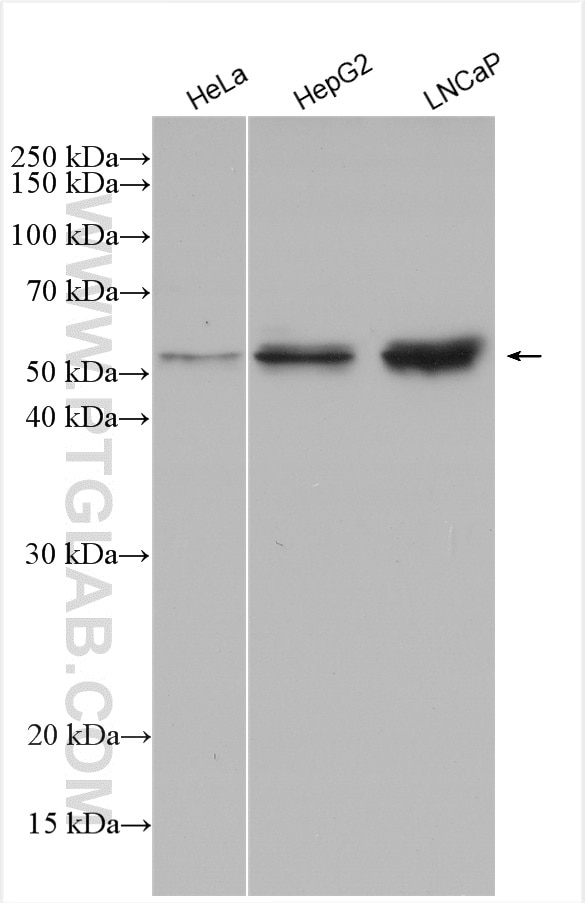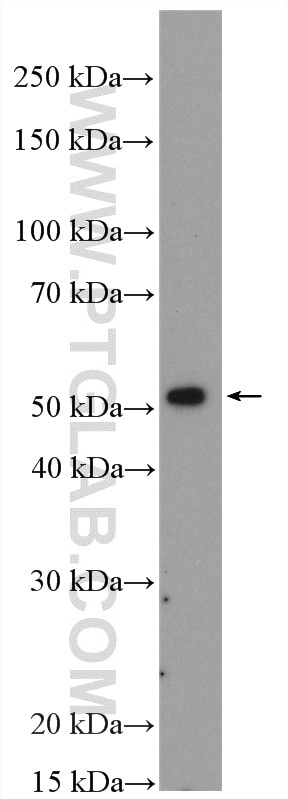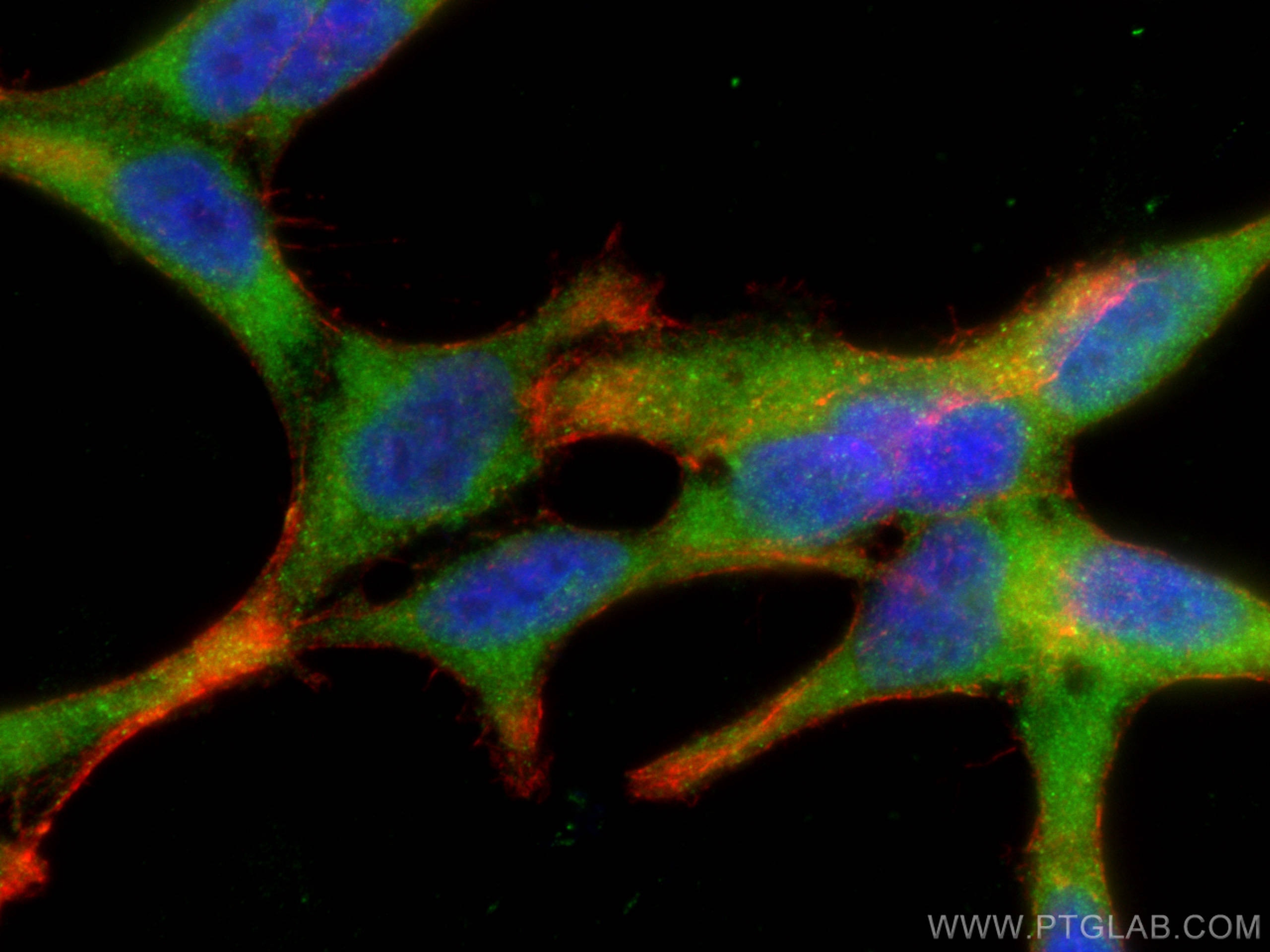Anticorps Polyclonal de lapin anti-ODC1
ODC1 Polyclonal Antibody for IF, WB, ELISA
Hôte / Isotype
Lapin / IgG
Réactivité testée
Humain, souris et plus (2)
Applications
WB, IHC, IF, ELISA
Conjugaison
Non conjugué
N° de cat : 28728-1-AP
Synonymes
Galerie de données de validation
Applications testées
| Résultats positifs en WB | cellules HeLa, cellules HepG2, cellules LNCaP, tissu de thymus de souris |
| Résultats positifs en IF | cellules LNCaP, |
Dilution recommandée
| Application | Dilution |
|---|---|
| Western Blot (WB) | WB : 1:1000-1:4000 |
| Immunofluorescence (IF) | IF : 1:200-1:800 |
| It is recommended that this reagent should be titrated in each testing system to obtain optimal results. | |
| Sample-dependent, check data in validation data gallery | |
Applications publiées
| WB | See 11 publications below |
| IHC | See 1 publications below |
| IF | See 1 publications below |
Informations sur le produit
28728-1-AP cible ODC1 dans les applications de WB, IHC, IF, ELISA et montre une réactivité avec des échantillons Humain, souris
| Réactivité | Humain, souris |
| Réactivité citée | rat, Humain, porc, souris |
| Hôte / Isotype | Lapin / IgG |
| Clonalité | Polyclonal |
| Type | Anticorps |
| Immunogène | ODC1 Protéine recombinante Ag29751 |
| Nom complet | ornithine decarboxylase 1 |
| Masse moléculaire calculée | 461 aa, 51 kDa |
| Poids moléculaire observé | 51 kDa |
| Numéro d’acquisition GenBank | BC025296 |
| Symbole du gène | ODC1 |
| Identification du gène (NCBI) | 4953 |
| Conjugaison | Non conjugué |
| Forme | Liquide |
| Méthode de purification | Purification par affinité contre l'antigène |
| Tampon de stockage | PBS avec azoture de sodium à 0,02 % et glycérol à 50 % pH 7,3 |
| Conditions de stockage | Stocker à -20°C. Stable pendant un an après l'expédition. L'aliquotage n'est pas nécessaire pour le stockage à -20oC Les 20ul contiennent 0,1% de BSA. |
Informations générales
Ornithine decarboxylase (ODC) is also named as ODC1 and belongs to the Orn/Lys/Arg decarboxylase class-II family. It catalyzes the conversion of ornithine to putrescine, the first step and a major site of regulation of polyamine biosynthesis. The level of ODC is known to be controlled at several sites, namely transcription, translation, and enzyme degradation. Polyamines can stimulate the degradation of ODC as a type of negative feedback control (PMID:8486633). This protein can be phosphorylated in vivo (PMID:8798774). ODC1 can form a homodimer and only the dimer is catalytically active, as the active sites are constructed of residues from both monomers (PMID: 10623504). The molecular mass of ODC1 is 51 kDa, and the homodimer is 106 kDa.
Protocole
| Product Specific Protocols | |
|---|---|
| WB protocol for ODC1 antibody 28728-1-AP | Download protocol |
| IF protocol for ODC1 antibody 28728-1-AP | Download protocol |
| Standard Protocols | |
|---|---|
| Click here to view our Standard Protocols |
Publications
| Species | Application | Title |
|---|---|---|
Mol Ther Targeting RNA Editing of Antizyme Inhibitor 1: a Potential Oligonucleotide-Based Antisense Therapy for Cancer. | ||
Front Oncol CDC27-ODC1 Axis Promotes Metastasis, Accelerates Ferroptosis and Predicts Poor Prognosis in Neuroblastoma. | ||
Hum Mol Genet Ornithine Decarboxylase, the rate-limiting enzyme of polyamine synthesis, modifies brain pathology in a mouse model of tuberous sclerosis complex. | ||
Biochim Biophys Acta Mol Cell Res Urea transporter B downregulates polyamines levels in melanoma B16 cells via p53 activation. | ||
Onco Targets Ther Simultaneous Inhibition of Ornithine Decarboxylase 1 and Pyruvate Kinase M2 Exerts Synergistic Effects Against Hepatocellular Carcinoma Cells. | ||
Vet Microbiol Polyamine regulation of porcine reproductive and respiratory syndrome virus infection depends on spermidine-spermine acetyltransferase 1. |
Avis
The reviews below have been submitted by verified Proteintech customers who received an incentive forproviding their feedback.
FH Hua (Verified Customer) (09-07-2023) | Works well.
 |
FH Janelle (Verified Customer) (09-12-2022) | Highly specific to target, clean blots
|




